 Weird Stuff
Weird Stuff  Weird Stuff
Weird Stuff  Movies and TV
Movies and TV Top 10 Ghost Adventures Episodes That Will Haunt You Forever
 Animals
Animals Ten Animals That Produce and Store Toxins in Unlikely Places
 Weird Stuff
Weird Stuff 10 Weird Things That Warp Your Sense of Time
 Miscellaneous
Miscellaneous Ten More Extremely Unexpected U.S. State “Firsts”
 Humans
Humans 10 Ideas That Scare People to Death
 Music
Music The Cursed Decade: 10 Classic Rock Stars Who Had Low Periods in the 1980s
 Health
Health 10 Crazy Ways Sleep Deprivation Can Affect You
 History
History 10 Enthralling Facts about the Field of Cloth of Gold
 Pop Culture
Pop Culture The Ten Greatest Engineers in Science Fiction History
 Weird Stuff
Weird Stuff 10 Surprising Things That Were Designed to Stop Evil Behavior
 Movies and TV
Movies and TV Top 10 Ghost Adventures Episodes That Will Haunt You Forever
 Animals
Animals Ten Animals That Produce and Store Toxins in Unlikely Places
Who's Behind Listverse?

Jamie Frater
Head Editor
Jamie founded Listverse due to an insatiable desire to share fascinating, obscure, and bizarre facts. He has been a guest speaker on numerous national radio and television stations and is a five time published author.
More About Us Weird Stuff
Weird Stuff 10 Weird Things That Warp Your Sense of Time
 Miscellaneous
Miscellaneous Ten More Extremely Unexpected U.S. State “Firsts”
 Humans
Humans 10 Ideas That Scare People to Death
 Music
Music The Cursed Decade: 10 Classic Rock Stars Who Had Low Periods in the 1980s
 Health
Health 10 Crazy Ways Sleep Deprivation Can Affect You
 History
History 10 Enthralling Facts about the Field of Cloth of Gold
 Pop Culture
Pop Culture The Ten Greatest Engineers in Science Fiction History
10 Mysteries And Secrets Surrounding British Royalty
Having been around for centuries, the ruling families of Great Britain have more than their fair share of intrigue and rumors, ranging from the ridiculous to the fascinating. Some even have the potential to rewrite history.
10 Dracula’s Descendants
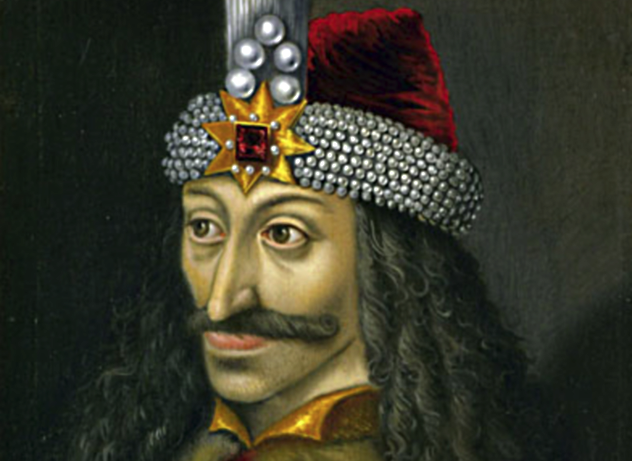
If you think Prince Charles might be cool in the role of a vampire, maybe it’s because he is related to a real “vampire.” The Prince of Wales is a great-grandson 16 times removed to Vlad III, the 15th-century Wallachian nobleman known as “the Impaler,” whose orgies of torture and blood inspired the vampire legend and Bram Stoker’s Dracula.
Charles and the royal family can trace their lineage back to Vlad through Princess Mary of Teck, who wed King George V and was Queen Elizabeth II’s grandmother. Mary was descended from two of Vlad’s sons.
And that is not the only link to vampirism. It is claimed that porphyria, the iron-deficiency disease that makes the skin sensitive to the sun and is thus behind the vampire myth, is present in the royal family. Porphyria was theorized to be behind the madness of King George III, whose urine was reportedly blood-red—a sign of the disease. It may have afflicted other members of the family, the most recent being Prince William of Gloucester, first cousin of Queen Elizabeth.
Prince Charles accepts his link to the Romanian tyrant, who ate bread dipped in his victim’s blood, with humor. “Transylvania is in my blood,” he quipped. “The genealogy shows I am descended from Vlad the Impaler, so I do have a bit of a stake in the country.” Charles does have a special fondness for Romania, having purchased a farmhouse in Viscri, a village in rural Transylvania. He is also the patron of a charity that works to preserve the region’s cultural heritage.
Meanwhile, Romania is exploiting the royal family’s link to Vlad to draw in British tourists, especially to Vlad Dracula’s Castle Bran in Transylvania.
9 Richard III On Trial
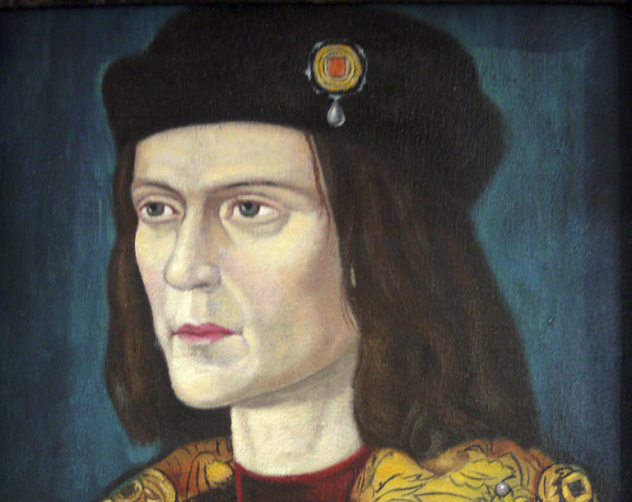
William Shakespeare portrayed King Richard III as a hunchbacked usurper who ordered his nephews confined to the Tower of London and later smothered them to death to eliminate any rival to the throne. The discovery of two child skeletons in the Tower in 1674 seemed to confirm the story, and Richard would always be maligned as the most villainous uncle in history.
The facts seem straightforward enough. Upon the death of Edward IV in April 1483, his 12-year-old son Edward was proclaimed king, and his uncle Richard, Duke of Gloucester, was named as protector. In London, Richard was informed that Edward V and his nine-year-old brother, Richard, were illegitimate. Edward IV had married their mother Elizabeth Woodville when he was already betrothed to another woman. Parliament petitioned Duke Richard to become king instead. The two boys were sent to the Tower and were never seen again.
So why did Richard murder them? If they were already declared illegitimate, then they posed no threat. Richard never made their deaths, which he could have attributed to natural causes, public which is strange if he didn’t want his claim to the throne challenged. It is possible that the princes did not even die in 1483 at all. Richard was a deeply religious person who was loyal to his brother, which points to his innocence.
It is also odd that Richard’s enemy, the Tudor Henry VII, did not order an inquest on the fates of the boys. In fact, it appears that Henry, who seized the throne after Richard was killed at the Battle of Bosworth in 1485, had a stronger motive for killing the princes. Henry’s claim to the throne rested on his marriage to the boys’ sister, Elizabeth of York. But since the siblings had been declared illegitimate, Henry had to reverse the situation. However, by proclaiming the legitimacy of Edward IV’s children, he also restored the validity of Edward V’s kingship.
If the princes were still alive in 1485, it was Henry who had reason to get rid of them. Subsequent Tudor propaganda, picked up by Shakespeare, framed Richard for the deed. As the evidence stands, however, no jury would convict Richard of murder.
8 The Wrong Royal Family?

King Richard III’s remains were discovered beneath a parking lot in Leicester in 2012. Proof that it was really Richard came from mitochondrial DNA samples (those passed from mother to child) which matched those of two modern female relatives. The surprise was in the Y-chromosome haplotypes, passed through the male line. It didn’t match any of the king’s present descendants.
The conclusion is inescapable: Somewhere along the line, the chain of paternal DNA had been broken. A child whose father was not of the royal bloodline had been mistakenly taken as legitimate. The finding has significant implications on the legitimacy of the ruling House of Windsor, depending on where in the 500-year-old chain the break occurred. A recent break would only affect the dukes of Beaufort, but a break at the top of the family tree would call into question the legitimacy of most of Britain’s monarchs.
Without exhuming more bodies, scientists cannot tell just who the illegitimate child was, but chief suspect is John of Gaunt (1340–1399), alleged son of Edward III. John’s real father was rumored to have been a Flemish butcher. If true, that makes his son Henry IV, and the rest of the monarchs who descended from him, illegitimate. We have already noted how Henry VII claimed the throne through Elizabeth of York, but Elizabeth, too, traced her line back to John of Gaunt. (Henry’s royal bloodline derived from his mother Margaret Beaufort, but the Beauforts were excluded from the throne by law.)
Professor Kevin Schurer of the University of Leicester, said: “The first thing we need to get out of the way is that we are not indicating that Her Majesty should not be on the throne. There are 19 links where the chain could have been broken so it is statistically more probable that it happened at a time where it didn’t matter. However, there are parts of the chain which, if broken, could hypothetically affect royalty.”
7 Was Elizabeth I A Virgin By Choice?
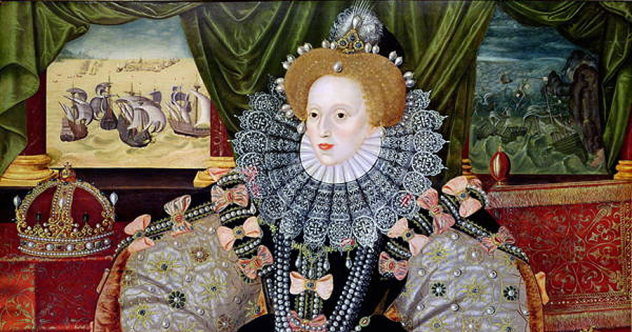
Queen Elizabeth never married and would go down in history as the Virgin Queen. However, that does not preclude her having had a sexual relationship outside of marriage. Elizabeth openly flirted with men, and her intimate relationships with male courtiers were fodder for much gossip. Among those with whom she may have had romantic affairs were Lord Chancellor Christopher Hatton, Sir Walter Raleigh, and—in her twilight years—the much younger Robert Devereux, Earl of Essex.
The love of her life, however, was Robert Dudley, Earl of Leicester. Elizabeth didn’t care what the public thought about their liaison, especially since Dudley lived away from his first wife to be close to the queen. It was rumored that Elizabeth bore Dudley several children. But Elizabeth teased and tantalized Dudley regarding her matrimonial intentions, until he got fed up and married Elizabeth’s cousin, Lettice Knollys, instead. A furious Elizabeth struck the new Countess of Leicester’s ears and banished her from the court.
Why was Elizabeth so difficult when it came to marriage? The traditional explanation was that she regarded herself as being married to England and didn’t want to diminish her political power by sharing it with a husband. A deeper reason may be because Elizabeth had a psychological aversion to marriage. At an early age, she had associated marriage with death. Her father Henry VIII killed many of his wives, including her mother, Ann Boleyn. At age eight, Elizabeth was traumatized by the execution of her stepmother, Catherine Howard. That was when she declared that she would never marry.
Elizabeth may have also had a devastating secret, suggesting that she had less choice in the matter. The playwright Ben Jonson talked about the queen having “a membrane on her which made her incapable of man.” This could mean she had an abnormally thick hymen, or that she was debilitated by vaginismus, which makes the vaginal muscles tight, rendering the sufferer unable to have normal sex.
Whatever the reason, it did not stop Elizabeth from loving Dudley till the day he died in 1588. The queen mourned as any wife would the passing of the pillar and strength of her life.
6 The Mysterious Death Of Amy Robsart

Months before Elizabeth was crowned queen in 1558, rumors flew that she was about to take her relationship with Robert Dudley to the next level and marry her new Master of the Horse. The only trouble was that Dudley already had a wife, Amy Robsart. So, on September 9, 1560, when 28-year-old Amy was found dead of a broken neck at the bottom of a short and shallow staircase in Cumnor House, Oxfordshire, suspicion that Dudley killed his wife was inevitable. The ensuing scandal ended any matrimonial plans Elizabeth and Robert may have had.
It is one of the most intriguing historical whodunits. Aside from murder, suicide or an accident were proposed as solutions. Amy had been overheard praying for deliverance from her desperate situation and may have been suicidal. On the day of her death, Amy ordered that she be left alone and sent her servants away. But Amy also just ordered a new velvet gown for herself—hardly indicative of a mind contemplating suicide, some argue. It has been suggested that in 1560, Amy was suffering from breast cancer, which might have triggered a skeletal collapse, which sent her tumbling down the stairs. The staircase itself was problematic. It was laid out in such a way that a wall would have prevented a falling body from landing at the bottom.
A recently discovered coroner’s report, however, may point to murder. It describes two wounds on Amy’s head, possibly from blows struck before she fell down the stairs. Her husband Robert is the prime suspect, but Dudley reacted to Amy’s death with shock and consternation and immediately ordered an investigation. If not Dudley, was it possible that Elizabeth herself ordered it? Or was it someone else out to frame or discredit Dudley—someone like William Cecil, his chief rival at court? Amy would obey all three—Dudley, Elizabeth, or Cecil—had any one of them asked her to clear the house of witnesses to make way for the killer.
One thing is for sure: The coroner’s report has only deepened the mystery, and it will be debated for years to come.
5 Was Jack the Ripper A Royal?
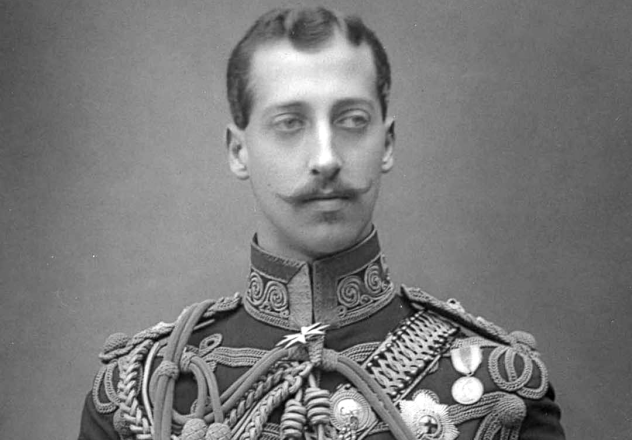
Albert Victor Christian Edward, or “Eddy,” as he was called by his family, was Queen Victoria’s grandson and an enigmatic figure in many respects. Today, he has a reputation of being intellectually challenged and politically inept, though some historians declare otherwise. More damaging was his alleged involvement in a homosexual brothel. Eddy’s controversial lifestyle left him open to scandalous charges, and one of these points to him as the infamous serial killer Jack the Ripper.
Beginning in the 1960s, the theory gained traction through a series of books and documentaries. It was alleged that the murders of five women in London’s Whitechapel district from 1888–91 were committed because they knew Prince Eddy had secretly married Annie Elizabeth Crook, a Catholic commoner working as a shop assistant. Eddy, it was suggested, had witnessed the evisceration of game while hunting, giving him the necessary knowledge to mutilate his victims. Eddy’s murderous rampage may have been brought on by advanced syphilis, which was slowly eating away his brain. However, records show that Eddy wasn’t even in London at each of the murder dates.
The prince’s ironclad alibis have led some to propose that, instead of being Eddy himself, the Ripper was someone close to the royal family. A man named Joseph Sickert, who claimed to be the son of famous painter Walter Sickert, repeated a story told to him by his father. Walter was allegedly privy to a conspiracy involving the royals, even Queen Victoria herself. Walter revealed that he was the one who introduced Eddy to Annie Crook. In time, Annie was pregnant with a daughter, Alice.
Discovering the scandalous situation, the queen called on the Prime Minister Lord Salisbury to do something about it, and Salisbury in turn delegated the task of cover-up to the royal doctor, Sir William Gull. Gull kidnapped Annie, confined her in one of his hospitals, and tried to erase her memory, eventually driving her insane. But Alice’s nanny, Mary Kelly, managed to spirit the child away from Gull’s clutches. Kelly divulged the secret to her fellow prostitutes, Polly Nichols, Elizabeth Stride, and Annie Chapman, who then began blackmailing the government.
Gull hired a coachman, John Netley, to silence the women. (The fifth victim, Catherine Eddowes, who often went by the name Mary Kelly, was a case of mistaken identity.) Some theorists propose that Walter Sickert himself was Jack the Ripper, and the creepy paintings that he later produced were the victims in their death poses. Another painting, Jack the Ripper’s Bedroom, is a picture of Sickert’s own rooms at East End. Sickert said that the previous occupant had been suspected by the landlady of being the killer.
Though intriguing, the theory fails for lack of concrete evidence and over-reliance on mere rumor and secondhand statements. But conspiracy theorists believe that is just what you would expect—the Salisbury government had expunged all the records.
4 Victoria’s Secret
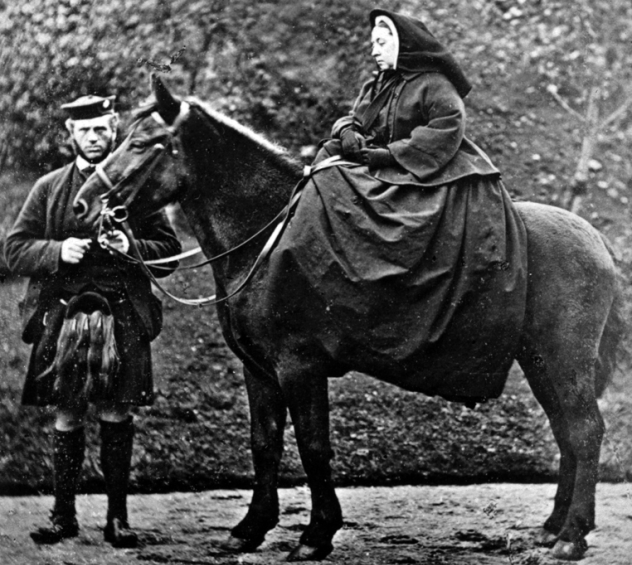
Were they lovers or were they not? That is the intriguing and titillating question asked about strait-laced Queen Victoria and her manservant, John Brown. Bereaved by the death of her husband Prince Albert in 1861, when she was 42 with nine children and an empire to rule, Victoria found solace and comfort in the company of her Scottish servant at Balmoral Castle.
As the years went by, John and Victoria would forge such a bond that when Brown died, Victoria told her sister-in-law, “You have your husband—your support, but I have no strong arm now.” John was her confidante, and there is no doubt that Victoria loved him, the “best, the truest heart that ever beat.” Such a tender and intimate relationship between a queen and a commoner would have raised eyebrows even today. But did it go beyond affection to something more sexual?
For 130 years, rumors have persisted that John and Victoria were secretly married. There are hints of a cover-up: Victoria’s diaries suspiciously retained only few references to Brown after her daughter Beatrice was through editing them. Brown’s own diaries had been destroyed. The manuscript of the memoirs the queen wrote about him was also destroyed.
After Victoria died, her doctor, Sir James Reid, bought off a blackmailer who was harassing King Edward VII with 300 letters, which Reid described as “most compromising.” They were correspondence between the queen and the manager of the Balmoral estate, who had a dislike for Brown. Sir James himself once came upon John and Victoria in a suggestive situation.
Controversial evidence has surfaced in the diaries of a politician named Lewis Harcourt, who wrote in 1885 of a Reverend Norman Macleod of Barony Church in Glasgow, who “confessed . . . on his death bed that he had married the Queen to John Brown, and added that he had always bitterly regretted it.” It is hard to dismiss the respectable Harcourt as a gossip—he served in Liberal governments and retired with a peerage in 1916.
We may never know the true relationship between the queen and her servant. When she died, Victoria clasped a photograph of John Brown in her hand as she lay in her coffin. Among the mementos of Prince Albert and her children surrounding the body were a lock of Brown’s hair and his handkerchief. And on Victoria’s finger, as her last request, was Brown’s mother’s wedding ring. We leave the reader to judge.
3 The House Of Windsor’s Secret Prince
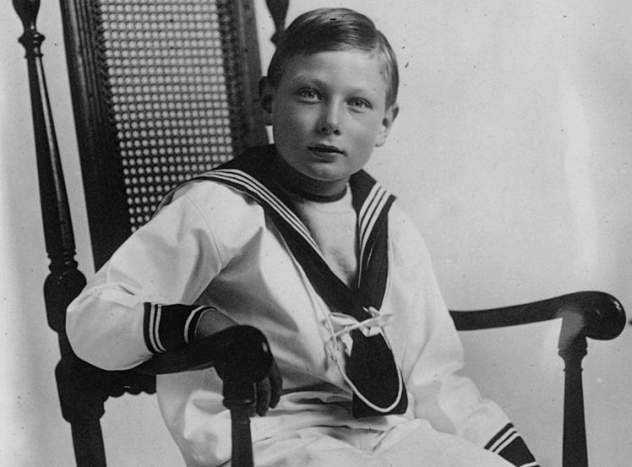
Since the 20th century, princes of the British royal house have lived their entire lives under the glare of the limelight and scrutiny of the public. But one prince has been lost to history. Prince John, the youngest child of King George V and Queen Mary, is hardly known. He was one secret that the House of Windsor tried hard to keep from getting out.
John was born on July 12, 1905, a perfectly normal and happy child who was adored by his parents. But at an early age, John suffered a fit that was diagnosed as epilepsy. It was devastating news to the family, not just because of the illness itself, but also because of the perceived embarrassment it would cause if the public found out. It was decided to send John away to an isolated place safe from curious eyes. It may seem shocking to us today, but for the social mores of the time, putting an ill child—and a prince at that—away in a virtual prison was perfectly acceptable.
John was confined to Sandringham, the family estate in Norfolk, in a house called Wood Farm. His only companions were his devoted nurse, Charlotte “Lalla” Bill, and a male orderly. Though separated from his family and society, John didn’t lose his cheerful disposition. Playing soldier with a wooden sword and paper hat was his favorite game. The niece of a groom, Winifred Thomas, who was about John’s age, later became his closest friend. They spent much time together, cycling and riding ponies around the estate. One positive effect of John’s isolation was that it removed the stress of being a royal.
Whenever John had to see his doctors in London, he would ride in a car with the blinds drawn. Except for occasional glimpses, people never saw him at all. John wasn’t even included in the family photograph taken at Buckingham Palace during his parents’ silver wedding anniversary in 1918.
Despite her depiction as being cold and uncaring, Queen Mary often spent time with John at Wood Farm and delighted in his company. When John turned 13, his seizures became more frequent and serious. In the early hours of January 18, 1919, John had a severe attack and couldn’t be awakened. King George and Queen Mary hurried to Sandringham to find their son dead on his bed. While his parents were in anguish, his elder brother, the future Edward VIII, remarked quite callously that “the animal” was dead and he had no interest in mourning him.
John was buried in the local church and soon passed from memory. Only a few scant references to him can be found in royal biographies.
2 The Crash At Eagle’s Rock

Like his brother King Edward VIII, it was rumored that Prince George, Duke of Kent, was pro-Nazi and favored appeasing Adolf Hitler. He was also an alleged bisexual drug addict. So when the plane carrying him mysteriously crashed in 1942, talk of assassination inevitably surfaced.
George Edward Alexander Edmund was the fourth son of King George V. Dashing and handsome, he was even more popular with the public than his speech-challenged brother Bertie, King George VI. In 1934, he married his second cousin, Princess Marina of Greece and Denmark, but he also allegedly had relationships with playwright Noel Coward, spy Anthony Blunt, and author Barbara Cartland. George hung out with American socialite Kiki Preston, the “girl with the silver syringe” and was said to be a user of cocaine and morphine himself.
On August 25, 1942, as World War II raged, George and 15 other companions took off on an RAF Sunderland flying boat from Cromarty Firth in Scotland and headed for Iceland on a “special mission.” A short time later, Flight W-4206 came crashing down on Eagle’s Rock, the fireball incinerating everything and everyone on board save for the lone survivor, Flight Sgt. Andrew Jack.
Such accidents were numerous in the North Highland’s atrocious weather, and an official inquiry blamed the crash of Flight W-4206 on a “serious mistake in airmanship.” But rumors of a cover-up were already buzzing. Was it really the work of enemy saboteurs? Or was it an inside job to eliminate the Duke with pro-German sympathies?
It appears that the only survivor, Flight Sgt. Jack, was compelled to sign the Official Secret Act, as he refused for a long time to divulge any details of what really occurred during the fatal flight. When Jack finally told his family, it was to reveal that it was George, not the pilot, who was at the controls when the plane crashed, and that someone was on board who shouldn’t have been there.
The identity of this mysterious person has fueled speculation. It was suggested that it was George’s then-current lover. (Jack never specified if it was a man or a woman.) More bizarre was the theory that the person was Hitler’s deputy Rudolf Hess and that he and the Duke were on the way to Sweden to negotiate peace. A double allegedly stood in for Hess in the Nuremberg trials and subsequently died in Spandau prison.
1 The Duke Of Windsor And The Nazis
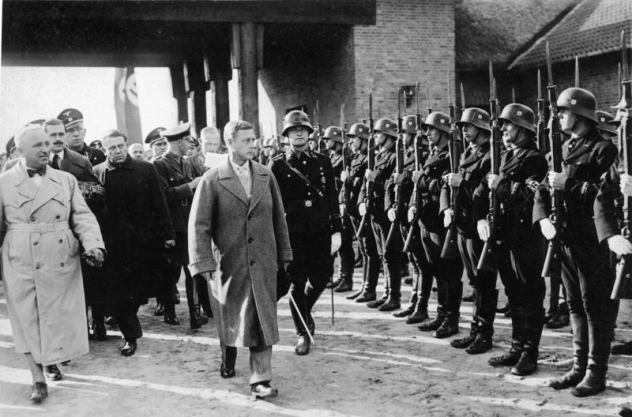
On December 10, 1936, King Edward VIII abdicated his throne to marry the American divorcee Wallis Simpson. The couple was thereafter snubbed by the royal family and the British public and went into exile. At first blush, it seems like a movie romance where love triumphs over the barriers of social status. But now, it appears that more sinister forces were at work behind Edward and Wallis.
In an interview with the FBI, a Benedictine monk named Friar Odo, the former Duke of Wurttemburg, alleged that Nazi Foreign Minister Joachim von Ribbentrop had been Wallis’s lover while he was ambassador to Britain in 1936. Wallis was also a close friend of Princess Stephanie von Hohenlohe, a suspected German spy whose sophisticated lifestyle was personally maintained by Hitler with a generous allowance. It comes as no surprise that Wallis was pro-Nazi in her views, just like Edward. As Prince of Wales, Edward was proud of his German origins (the family had changed its name from Saxe-Coburg Gotha to Windsor to de-emphasize the German connection), spoke fluent German, and thus felt ties of kinship to the Nazi leadership.
MI5 believed that Wallis was passing information to Ribbentrop and kept her under surveillance. Hitler, of course, would have liked nothing better than having allies on the British throne. After Edward renounced his kingship, he and Wallis, now Duke and Duchess of Windsor, visited Hitler at the Berghof in October 1937. Seeing the Reich firsthand only increased Edward’s admiration for Hitler.
When war reached the Windsors’ place of exile in France, Winston Churchill told them to move to Lisbon, fearing that the Nazis could use Edward for their own ends. Churchill was right. Though he didn’t know it, the Nazis had unveiled Operation Willi, a plot to kidnap and restore Edward to the throne as puppet king. Edward himself believed that Britain would lose the war and hoped a revolution at home would result in peace with Hitler. Churchill at once ordered the Windsors out of the Nazis’ reach to the Bahamas. The prime minister warned the hesitant Edward that as a serving army officer, he would be court-martialed if he disobeyed. The duke and duchess left Lisbon on August 1940, narrowly missing the SS team on a kidnap mission.
The FBI took up surveillance, and in 1941, word reached FBI Director J. Edgar Hoover that Hermann Goering intended to overthrow Hitler once Germany won and reinstall Edward as king. The Nazis never got to Edward in the Bahamas, and after the war, the royal family went into full damage-control mode. The evidence for the kidnap plot and Edward’s Nazi connections was covered up. There is no mention of either in the Duke of Windsor’s memoirs.
Larry is a freelance writer whose main interest is history.








